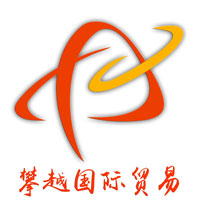Agency Service for China's Imported Feed Registration Certificate
For applications for import feed registration, agency services for certification documents of imported feed additive registration certificates, and the "Import Feed Registration Certificate" issued by the Ministry of Agriculture of China for imported feeds.
Overseas suppliers of imported feeds, feed additives, pet foods, etc., must register with the Ministry of Agriculture of China for imported feeds and feed additives and obtain an import feed registration certificate before exporting such products to China. Importers can only trade with exporters who have obtained the import feed registration certificate.
Feeds and feed additives produced by foreign enterprises that are sold and used in the People's Republic of China for the first time. Products produced in China's Hong Kong Special Administrative Region, Macao Special Administrative Region, and Taiwan Region shall be registered with reference to these requirements.
As defined in the "Regulations on the Administration of Feeds and Feed Additives", "feed" refers to industrially processed and manufactured products for animal consumption, including single feeds, additive premixed feeds, concentrated feeds, compound feeds, and concentrate supplements.
As defined in the "Regulations on the Administration of Feeds and Feed Additives", "feed additives" refer to small or trace amounts of substances added during the processing, production, and use of feeds, including nutritional feed additives and general feed additives.
【1】Compound feeds: Including pet feeds, etc.
【2】Concentrated feeds: Protein supplement feeds, etc.
【3】Additive premixed feeds: Compound premixed feeds, trace element premixed feeds, vitamin premixed feeds, etc.
【4】Concentrate supplements: Mixed concentrate feeds, etc., mainly composed of energy feeds, protein feeds, mineral feeds, and some feed additives.
【5】Feed additives: "Catalogue of Feed Additive Varieties (2013)" (Ministry of Agriculture Announcement No. 2045), including: amino acids, amino acid salts and their analogs, vitamins and provitamins, mineral elements and their complexes (chelates), enzymes, microorganisms, non-protein nitrogen, antioxidants, preservatives, mold inhibitors and acidity regulators, colorants and pigments, flavoring and attractant substances, binders, anti-caking agents, stabilizers and emulsifiers, polysaccharides and oligosaccharides (feed additive products not listed in the catalogue but approved for production and use in the country of origin require review and registration).
【6】Animal-derived feeds: Meat meal, fish meal, blood meal, feather meal, meat and bone meal, fish oil, shrimp meal, heme protein powder, fish soluble paste, etc.
【7】Single feeds: Fat powder (plant-sourced), inactivated brewer's yeast powder for feed, enzymatically hydrolyzed soybean protein, fermented soybean meal, potato protein powder and its fermented products, extruded soybean meal, DDGS, DDG, and other single feed products processed via special techniques;
【8】Other protein feeds, energy feeds, and their mixtures (excluding bulk feed raw materials such as palm kernel meal, dairy products and their by-products, etc.)
1. Feedstuff (single feed): Feed derived from one type of animal, plant, microorganism, or mineral.
2. Energy feed: Feed with crude fiber content below 18% and crude protein content below 20% in dry matter.
3. Protein feed: Feed with crude fiber content below 18% and crude protein content equal to or higher than 20% in dry matter.
4. Complete feed: Compound feed that meets the nutritional needs of raised animals (except for moisture).
5. Concentrate: A homogeneous mixture of protein feeds, mineral trace elements, vitamins, non-nutritive additives, etc., formulated in a certain proportion.
6. Concentrate supplement: Feed formulated from multiple feed raw materials in a certain proportion to supplement the nutrition of herbivorous animals based on roughage and green feed.
7. Additive premix: A premix prepared by expanding and diluting two or more feed additives with carriers or diluents in a certain proportion.
8. Compound premix: A premix prepared by mixing any two or more components from trace elements, vitamins, amino acids, and non-nutritive additives with carriers or diluents in a certain proportion.
9. Feed additive: Small or trace amounts of substances added during the processing, production, and use of feeds, including nutritional feed additives and general feed additives.
10. Nutritive additive: Trace or small amounts of substances used to supplement insufficient nutrients in feed.
11. Non-nutritive additive: Small or trace amounts of substances added to feed to ensure or improve feed quality, promote the production of raised animals, protect their health, and improve feed utilization.
a. Antioxidant: Additive added to feed to prevent or delay the oxidation and deterioration of certain active ingredients in feed.
b. Preservative: Additive added to feed to prevent or stop feed fermentation and spoilage.
c. Mould inhibitor: Additive added to feed to prevent mold growth in feed.
d. Flavor enhancement: Additive used to improve feed palatability and enhance the appetite of raised animals.
e. Color pigment: Additive added to feed to improve the color of animal products or feed.
f. Binder: Additive added to feed to improve the forming of powdery feed and the anti-morphological damage ability of pellet feed.



 One-on-One Service
One-on-One Service Fast Processing Cycle
Fast Processing Cycle Twenty Years of Import & Export Experience
Twenty Years of Import & Export Experience A Large Number of Successful Cases
A Large Number of Successful Cases
 Online Consultation
Online Consultation